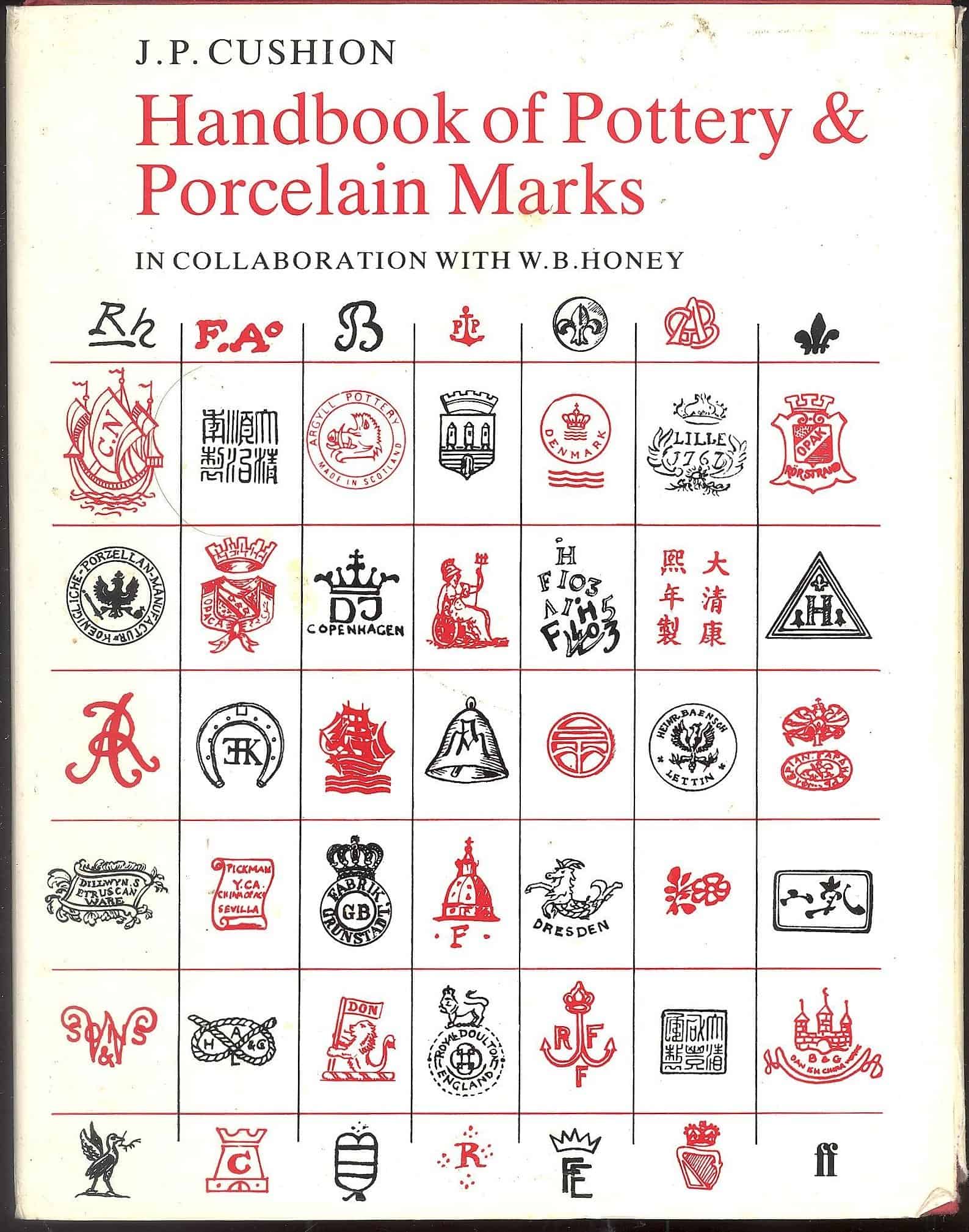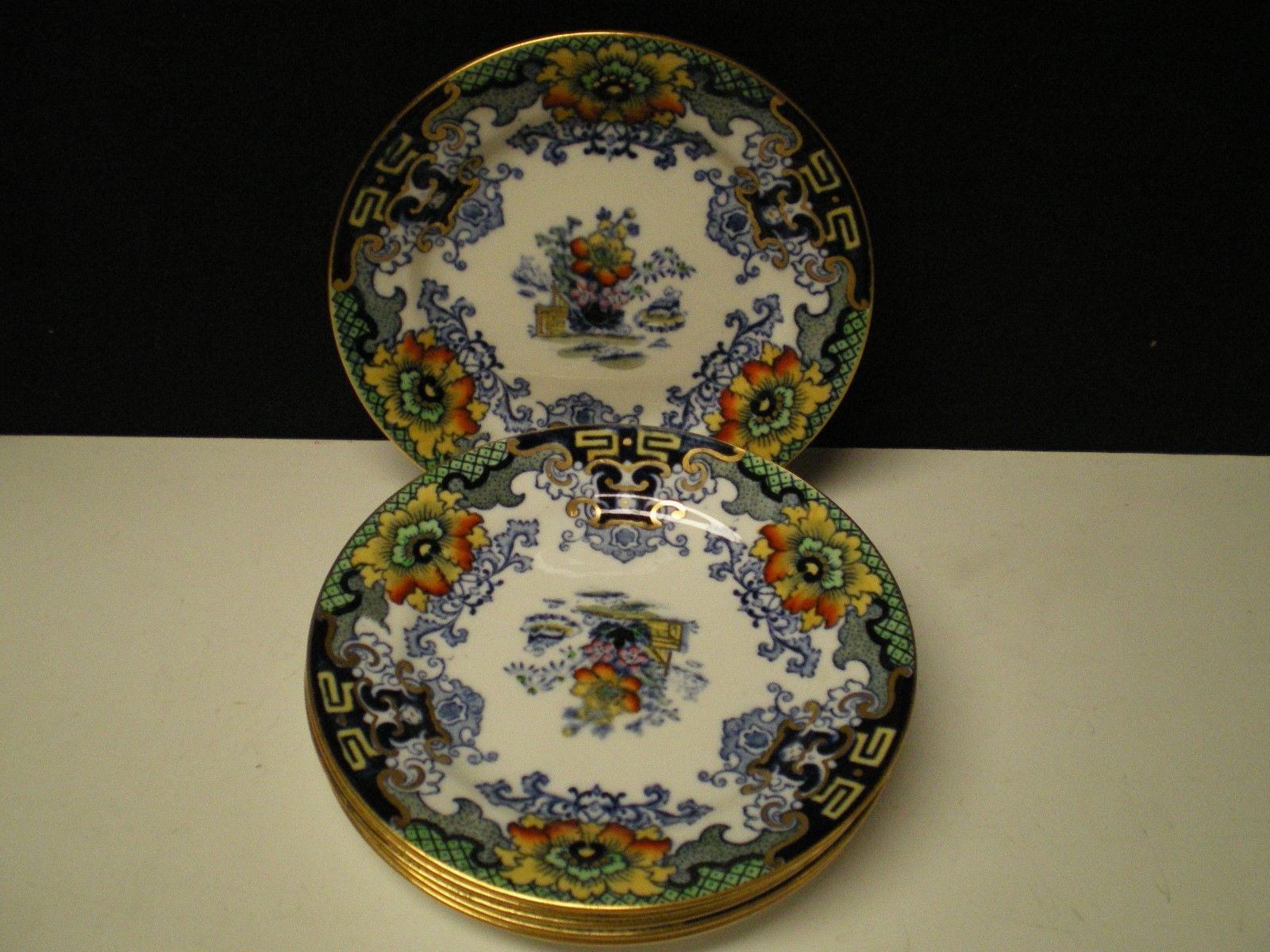
Bone ChinaEnglandTrade and 28 similar items
As a loose guide, there were four periods of Chelsea marks: 1. 1743 - 1749/50: The triangle period - an impressed triangle 2. 1750-1752: The raised anchor period 3.1752-56: The red anchor period 4. 1758-70: The gold anchor period

Date Ciphers and Factory Marks — RCD Collections
Mark "A" represents the mark used between 1842 and 1867; mark "B" represents the mark between 1868 and 1883. After 1884, the diamond-shaped marks were replaced by the letters Rd. No. (for registered number)—and numbers indicating the year the piece was registered (see Mark "C).

British Studio Pottery Marks Freeforms
The history of Limoges china begins in the late 1700s when kaolin was found at St. Yreix, near the city of Limoges in the region of France known as Limousin. Kaolin, also known as China clay, is a pale-colored clay that looks almost white. This clay was first found in China and used to make porcelain centuries ago in the 800s and 900s.

Derby Marks Antique pottery, Pottery marks, Pottery makers
Exactly how do you identify bone china? Luckily, there are different methods you can employ to distinguish between fake and genuine bone china. For instance, ensure you check the back stamp and identify the manufacturer, product specification, and country of origin.

Bone ChinaEnglandTrade and 33 similar items
Royal Grafton is a British fine bone china and porcelain manufacturer, which was founded in 1900 in Stoke-on-Trent, Staffordshire, England. The company was originally known as A. B. Jones & Sons Ltd and started producing fine bone china tea sets, dinnerware, and giftware. The company changed its name to Royal Grafton in 1950, and became.

Porcelain Marks, Pottery Marks and Ceramic Marks Guide Pottery marks, Chinese pottery, Pottery
How To Identify Bone China? 1. Look For Back Stamp 2. Examine The Weight Of The Piece 3. Listen To The Sound It Produces 4. Recognize The Patterns 5. Country Of Origin 6. Pay More 7. Translucent Famous English Bone China Patterns Spode Blue Italian Wedgwood Fairyland Lustre Spode Buttercup

Bone ChinaEnglandTrade and 33 similar items
In 1842, England started to offer registration of its decorative designs for pottery, china, wood, paper, porcelain, and glass. I have added charts below to help you learn the method of how the British marked their wares. These charts can be useful in identifying your wonderful British antiques.

Bone ChinaEnglandTrade and 28 similar items
Bone china is a very pure white (whiter than standard European porcelain) and can be cast so thin as to be translucent, yet is still surprisingly chip resistant compared with lesser crockery like ironstone and earthenware. Antique bone china was always expensive and difficult to work with.

Royal Stafford English Bone China 6499 Artifact Collectors
3) "Registered Numbers" (Reg, Reg'd) appear in the mid to late 1880s. 4) "Trade Mark" and "Ltd" appear most commonly on china made after 1860. 5) The word "Royal" on a piece suggests that it is likely to be Victorian, as does the diamond registration mark.

Handmade RADNOR Bone China Shaffordshire England Collectors Weekly
What Is A Pottery Mark? A pottery mark is a stamp, logo, or signature on a piece of pottery or porcelain. Pottery marks can be found on the bottom of a piece and used to identify the maker, the country of manufacture, and sometimes the date it was made. A few makers used paper labels instead of pottery marks, but these can be tricky to identify.

Royal Albert Bone China England Can You Tell Me How Much It Is Worth Artifact Collectors
You can always identify bone china by holding it up to the light and placing an open hand behind it. You will be able to see the shadows of your fingers through the china. This phenomenon is one of the things that give antique English bone china its delicate beauty.

Shelley Tea Cup Back Stamps Pinterest Bone china, China and Porcelain
There are two marks that need separate explanations; the Sevres mark and the English Registry mark. Both are in charts listed in our identification help section. Every collector knows that the quickest way to identify a piece of pottery or porcelain is to identify the mark, but sometimes it's unreliable because marks are often forged and changed.

Aynsley bone china, Aynsley, Aynsley china
The SPODE stamp found incised in the china. Pieces date from 1814 to 1833. The Copeland and Garrett mark, which was used from 1833 to 1847. It is sometimes included with the wording "Late Spode," distinguishing these pieces with the Spode name. The Spode Copeland's China England stamp, which represents a number of marks using both the.

I’m trying to identify a Tuscan Fine English Bone China pattern. Is there a way I can send you a
If a mark incorporates a Royal coat of arms, it is usually 19th century or later. If the name of the pattern is included on the back stamp of an English china mark, it is from after 1810. Use of the word 'Royal' denotes a date after the 1850s. 'Bone China' on a pottery mark means that the ware must be 20th century.

Makers Marks Antique knowledge, Pottery marks, Antique glassware
Porcelain marks are the fingerprints of antique china. Serving as both evidence of its origin, age, and often times, quality, the makers mark on a porcelain item is the first place many collectors look before making a purchase. For any piece of fine china, the porcelain mark is a symbol of pride in the manufacturer's workmanship.

Картинки по запросу english bone china marks Pottery marks, Antique porcelain, Antiques
Staffordshire porcelain is essentially all the above. There is a noted porcelain company named Crown Staffordshire, and Staffordshire is a region that was, (and still is), home to many English porcelain makers. It is also a type of porcelain which was known as salt-glazed, or creamware porcelain, but these aren't the only types produced there.